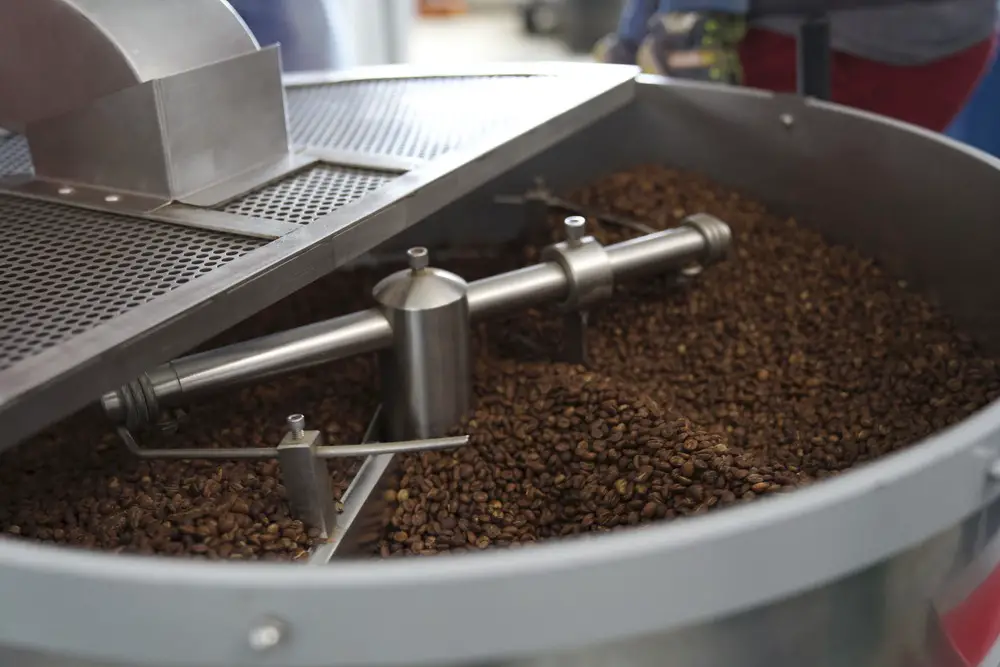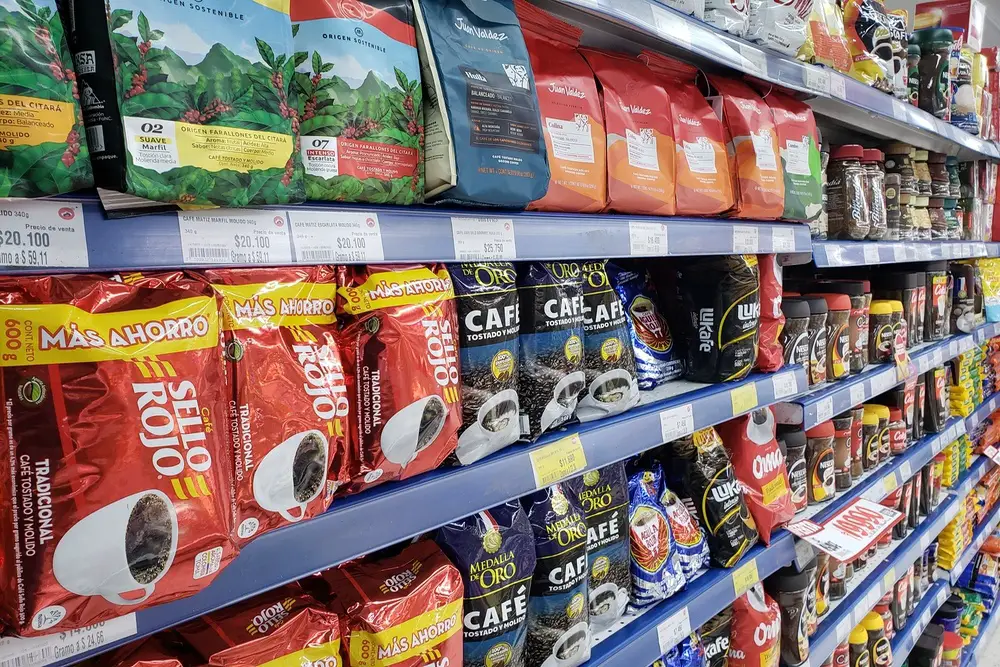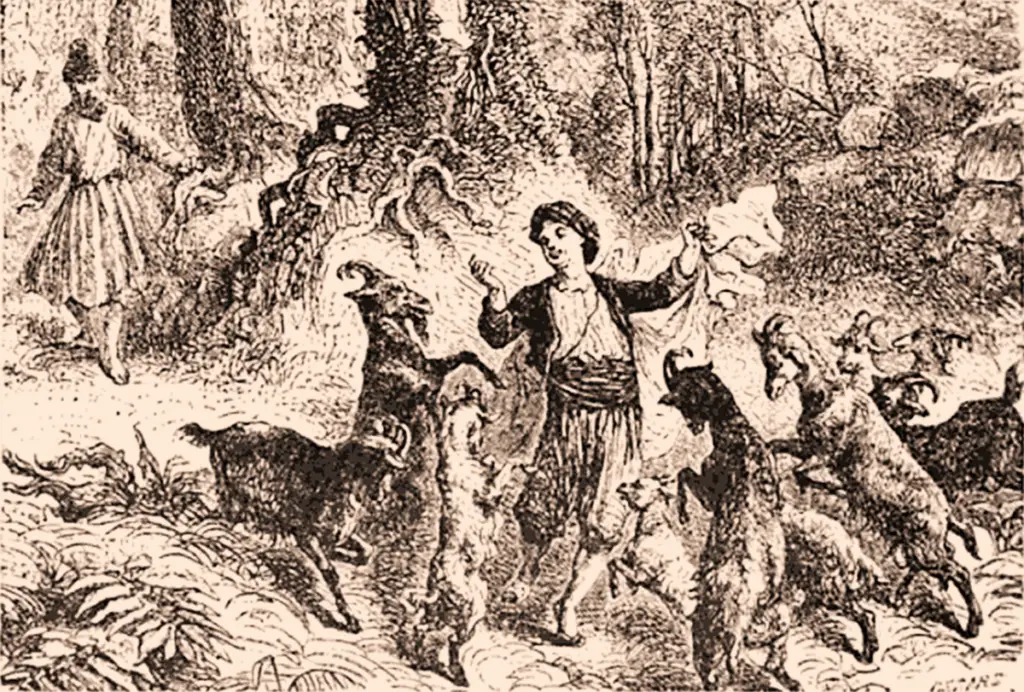With the modernization of the coffee industry, new methods to improve coffee production are being developed. One of them is the roasting of the beans in hot air roasters.
Table of Contents
What is special about air-roasted coffee?
Most commercial roasters roast their beans in a large rotating drum that constantly agitates the beans to ensure even heating.
Air roasters work in a completely different way with a number of advantages and some disadvantages compared to other roasting methods.
Like drum roasters, air roasters use hot air to roast the coffee. However, instead of physically agitating the coffee beans by spinning them, air roasters roast them evenly “on their own”.
Compared to drum roasters, air roasters roast much more evenly and with less effort and technology.
The origin of the hot air coffee roaster
Mike Sivetzes is a chemical engineer and coffee industry consultant best known for inventing the fluid bed roaster. He registered his patent for the first fluid bed roaster in 1976.
Not satisfied with traditional roasting methods, the chemical engineer decided to find something better and began his designs with a gas appliance built in his garage.
The “Sivetz roasting”, as the air roasting process is called, initially enjoyed little popularity in the 1970s. Despite the benefits it offers, it is still a relatively underused and well-known method today.
The air roasting process
In general, when air roasting coffee beans with a fluidized bed, the procedure is as follows:
The beans are placed in the roasting chamber where they float on a bed of very hot air that is forced through the chamber in one continuous motion. This device is referred to as a “fluidized bed”. As each individual bean floats in this vortex, it is roasted on all sides at a constant temperature, which is maintained by the air throughout the process.
During roasting, the beans pop and burst until the chaff (the bean’s outer husk) falls off and enters a catch chamber before settling. This chaff is continuously removed and separated throughout the process.
When the desired degree of roasting (determined by the preset roasting time and temperature) is reached, the cooling process begins.
Benefits of air roasting
Reduced roasting time
- Coffee roasting time is shorter and can be as little as 4 to 8 minutes, while drum roasting can take more than 15 minutes.
- A shorter roasting time means more batches, higher productivity and ultimately more revenue for the roaster.
- Longer roasting times can also mean greater loss of flavor. The longer the coffee is roasted, the further it strays from its true flavor.
- Air roasters roast your coffee at “temperature,” meaning they stop the roasting process once it reaches a certain time and temperature.
- Temperature roasting allows air roasters to be more precise and duplicate batches to get the same coffee bean color, taste and aroma.
More sustainable products and processes
- Similar to a popcorn machine, a forced air roaster keeps the coffee beans moving with a perfectly controlled flow of hot air to achieve an even roast.
- The hot air also blows out the chaff and other impurities that might otherwise burn into the beans and mask the bean’s true flavor profile. In short, the only thing that gets roasted is the bean.
The most economical equipment
- Air roasters are an inexpensive way to start roasting. They cost a fraction of drum roasters, but you have to keep in mind that the lower price also comes with a smaller batch size than drum roasters.
- However, with more and more air roasters coming out, you can produce a good amount of coffee in an 8-hour work day.
Structure of the roasting machine
- You can easily install the machine with standard tools and you can start using it almost immediately.
- No gas, no vent, no permits. No smoke or particulate matter extraction means no additional ventilation, post-combustion or straw collection is required, reducing environmental impact.
- Depending on the design, almost any air roaster can be placed almost anywhere.
Air flow
The air flow must always be fast enough to move the coffee beans. It also determines how quickly the heat is transferred to the beans. Otherwise they will get stuck in the airflow inlet at the bottom of the roasting chamber. As a result, they are constantly exposed to very hot air, causing them to burn and eventually ignite.
Airflow pressure
Air roasters require high pressure airflow. In drum roasters, the air has plenty of room to flow through the beans. With air roasters, the air has to physically lift the coffee in order to pass through it. This means that air roasters need fans that can generate high pressure.
high-pressure systems are prone to leaks, which can lead to smoke and energy loss. So, this is something to keep an eye on. If your air roaster seems to be leaking, finding a leak is a good place to start troubleshooting.
Differences between air roasting and drum roasting
Fluidized bed vs. mechanical arm
- In drum roasting, the coffee beans are not roasted by a fluidized bed of hot air, but by a mechanical arm that “stirs” the beans in a steel drum.
- As the beans fall against the boiling hot metal inside the drum, the temperature of the beans will change as they are removed or moved.
The taste
- The first difference you can notice when consuming convection roasted coffee is its taste.
- Coffee drinkers prefer convection roasted coffee. They claim that it tastes cleaner, less acidic, and less bitter than drum-roasted coffee.
- The key reason for the taste is the chaff, the outer shell that separates from the bean during roasting in the air.
Chaff
- With traditional roasting, there is no mechanism or way to remove the chaff during roasting.
- Instead of separating it, it remains in the drum or barrel.
- It sometimes burns and often produces smoke, but that burn and smoke ultimately affects the flavor of the coffee, especially dark roast coffee.
Conclusion
Hot air technology coffee roasters are one of the most effective coffee roasting equipment’s nowadays, which help users achieve high efficiency and productivity at work.



